

I’m sure most of you guys are aware of the short but fruitful linkup between BMW and McLaren that produced the F1 Supercar, but this was not the first time these two companies worked together. Back in the 1970s McLaren had an American based racing team that was used for its Indianapolis campaigns. It was this team which BMW charged with running its IMSA Camel GT campaigns for the ’77, ’78 and ’79 racing seasons.

And this was the tool: the E21 BMW 320 Turbo IMSA racer. A car which initially shared much in common with the European DRM racers but was developed in parallel by McLaren USA.

This is chassis number two of the three used by McLaren USA. BMW North American had the foresight to keep ownership of the chassis in the decades since the 320 Turbo finished its racing career. And I was lucky enough to photograph it a month ago at Rahal Letterman Racing in Ohio.
When I was a kid, I remember I used to have an A/FX 320 Turbo slot car which I would spend hours racing around. So to see the real life version of the car up close and person was a “pinch me is this real” moment for me!

But before we look at the restored 320 Turbo race car, let’s have a quick look back in history to learn more about it. In 1976, BMW North America commissioned Peter Gregg Racing to campaign the CSL in the North American IMSA Camel GT series. The campaign was reasonably successful with Gregg taking second in the championship.

The highlight of the year was a win at the Daytona 24hs but over in Europe the Porsche 935 was coming on song and a new race car would be needed.

So for 1977, BMW produced the Group 5 spec 320 although their focus shifted away from the World Endurance Championship, with the main priority being given to the German DRM Championship and the American IMSA Camel GT series. Above is Eddie Cheever in one of the German Junior Team cars.
Powered by the famous M12 Formula 2 engine, these cars were a force to be reckoned with in the 2L DRM class but the cars rarely raced head to head against the 935s in Europe. BMW seemed to prefer leading the Class 2 races for cars below 2 liters instead.

This was not the plan for the American bound car though, although it would only have to face off against the 935’s younger brother; the 934. With the exception of the shared World Championship rounds, IMSA did not allow the 935s to race in the 1977 Camel GT season.
When the BMW 320 first appeared at Daytona in 1977, it used the same naturally aspirated 2L M12 engine as the German DRM cars.

The 320 sat out Sebring while a turbo system was fitted to its 2L engine and next appeared at the Road Atlanta 100 Mile sprint race. It immediately scored a 4th place finish at the hands of British driver David Hobbs.
You’ll notice one element which is quite different to the Junior team cars is the use of a large 19 inch rear wheel, something which the restored car lacks unfortunately!

The American’s in the audience will of course recognize David Hobbs as one of the F1 commentators from Speed TV. Here’s what he looked like back in the day.

Mark Windecker was on hand to witness the start of the 3 hours of Mid Ohio on August 28, 1977.

You can see the lone BMW had to face off against a train of RSRs, 934s, 934-5s as well as Al Holbert’s 1976 IMSA Championship winning DeKon Monza.

Of the thirteen DeKon Monzas produced it’s Al Holbert’s chassis number 1014 which is probably the most famous. Built to the AA/GT regulations for American cars, it was a pure silhouette racer with a tube chassis enveloped by a fiberglass body. The only production parts on this car was the roof and windshield.

This Monza proved to be a pretty good piece of kit during the mid 1970s and racked up many victories in the ’75 and ’76 IMSA Camel GT race seasons.

By this point in the year the 320 Turbo was getting a reputation for being fast but fragile. the BMW was always in the hunt for pole position, and if it didn’t DNF would have a shot at victory. Hobbs had already taken outright victories at the Mid Ohio 100 Miles earlier in the season and at Sears Point Raceway -as it was then called.
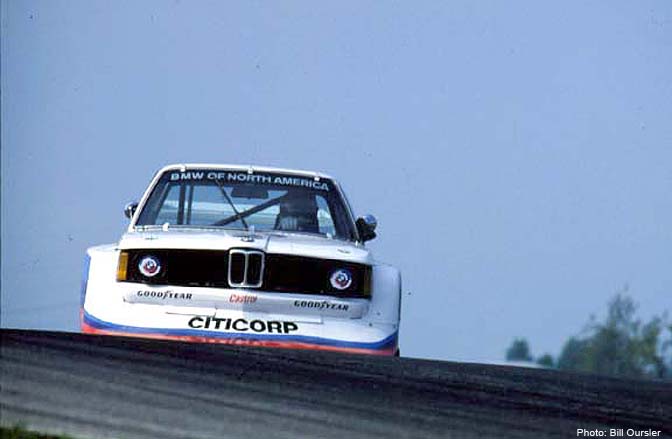
You’ll notice that front headlights by this stage had now been converted to twin headlights from the quad setup.

Hobbs sqeezed out back to back victories at Laguna Seca and Road Atlanta towards the end of season which netted him fourth in the Camel GT driver’s championship.

… However it was Al Holbert who was crowned driver’s champion for the second year running.

For the 1978 season a new force was coming to IMSA: the Porsche 935.

In order to accommodate these cars a new class was created: GTX and the BMW 320 was also reclassified to run against these mighty cars.

The BMW did have some advantages over the 935s though. It was much lighter, coming it at 875 kg to the 935’s 970 kg weight and was noted for having superior braking abilities. The E21 was able to live with the Porsches on pace, but unfortunately it just wasn’t that reliable.

None-the-less the venerable BMW 320 Turbo did take two victories in 1978 at Hallett Circuit and Sears Point.

The 1978 IMSA racing season will always be remembered as the year of Peter Gregg who took nine victories on his way to the driver’s title.

1979 was very similar with Gregg taking another title, this time with 8 wins.

The 935 at this stage was THE chassis to have in IMSA…

… and an increasing number of chassis entered the series.
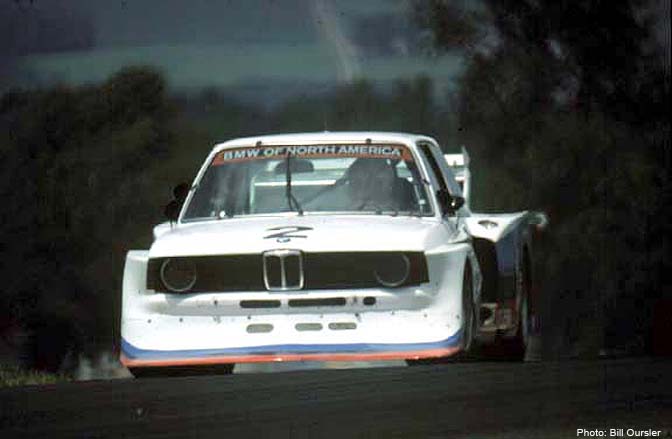
BMW countered with a new lightweight car which featured a tube chassis front end and one piece front body work.

This was good enough for two victories that year at Hallett (has anyone heard of this track before?) and Elkhart Lake.
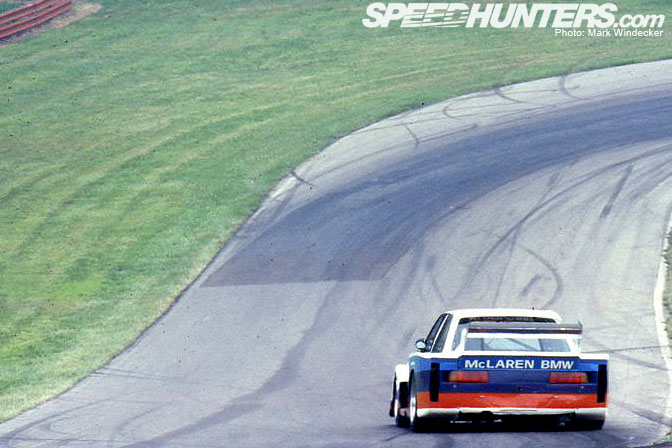
The little car was also able to take podiums at Road Atlanta (twice), Brainerd, Lime Rock Park and Laguna Seca which was good enough for David Hobbs to be classified fifth at the end of the year.
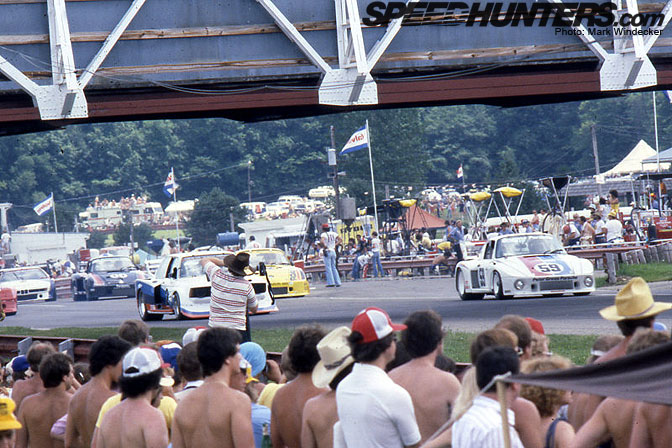
Speedhunters contributor Mark Windecker was at in Mid Ohio 1979 to shoot the BMW in its David vs Goliath struggle against the hoards of Porsches.

For this race Hobbs was joined by sports car legend Derek Bell.

By this stage, the BMW 320 Turbo was at the end of its usefulness as a race car.

The Porsche 935 still had plenty of room left for improvement, but BMW’s focus had shifted to the M1 model and the Pro Car series.

The McLaren BMW 320 Turbo will be remembered as one of the few cars that was able to challenge might of the early Porsche 935s and occasionally beat them at their own game. And for that reason alone, this car deserves a spot in the record books.
(BTW Look at that rear tire!…)

So let’s have a quick look at how chassis number 2 looks today.

It’s interesting to note that the huge 19″ rear tires the car used to race with are no longer manufactured and are impossible to source new. So the 320 has been fitted with smaller rears, which to my eye tames the craziness of the car just a little bit.

I was curious to see what’s underneath all the wild body work. You can see the original body is still present. I checked this on some of the other Group 5 E21s in Europe and some of them had had this sheet metal cut away.

This sloping fender was introduced during the car’s second race season in 1978. I assume it directs more air into the rear radiators.

Check out that front spoiler! There were multiple configurations of the front aero available depending on downforce needs. This looks like a medium downforce setup.
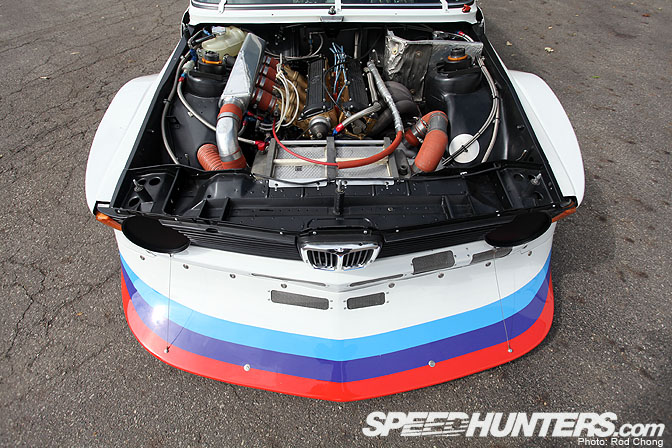
Ok let’s look under the hood/bonnet.

The engine is the famous 2L M12 block which was later used to power the Brabham F1 cars to their victories. Power is quoted at 650 hp @ 9,000 rpm although I assume more was available at the twist of the boost knob.
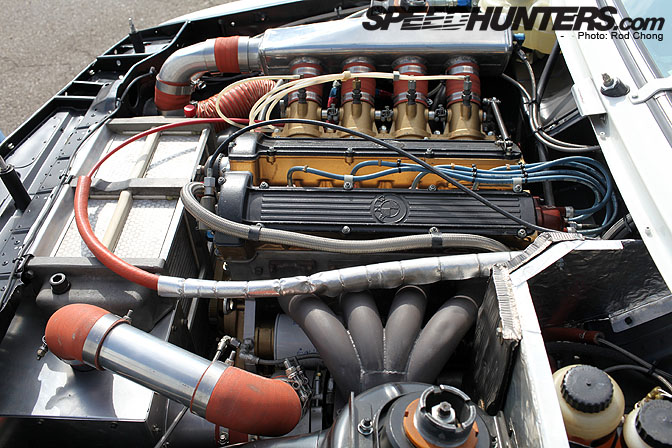
The turbo is routed through a fairly sizeable air to air intercooler. This technology was a bit new back then and was the first time that big power turbo cars were starting to emerge on to the world’s race tracks. Those who could master the tech and produce the power reliably, were the ones who converted outright speed into race wins.

If you look closely at the front of the turbo you can see it’s connected to an air box. This was pretty trick stuff back then. The two other Group 5 BMWs I’ve recently examined didn’t have this setup.

The air comes in one of these ducts at the front of the car into the turbo.

With the area in front of the engine devoted to the intercooler setup all oil and water coolers are placed in the rear wide-body fenders.

This means that a fair amount of water and oil plumbing is routed through the interior of the car.

Here’s a shot of the cockpit. Compared to the M3 GT2 it looks very spartan and mechanical! There aren’t many electronics to be seen.

The dash has been completely removed…

Some of the European 320s still have kept a semblance of a dash but not this car.

Curiously the Tach is upside-down. Perhaps this was something that Hobbs requested?

To the right of the driver is command central. Note that the boost knob has been mysteriously removed. I suppose BMW don’t want anyone putting the car into high boost mode do they?

It’s funny, you don’t see shift knobs like this on race cars any more.

Check out how the low down the battery and the fire bottle are mounted. A channel has been built into the back of the car to get these sitting below the chassis floor. The goal is to get the center of gravity as low as possible and it’s interesting to see the length that BMW went to ensure this.

I hope you enjoyed this exclusive look at one of the most famous race cars in the history of BMW Motorsport. We have a lot of material to get out today before BMW month ends so I’d better get on to the next story very quickly!
Best,
:Rod
Vintage Bill Ourlser photos from the Speed Merchants Collection






Nice article!
Hallett is in Northern Oklahoma.
http://www.hallettracing.net/
AWESOME !! LOVE THE SHOT THROUGH THE FENDER VENT,
HAAAAAAAAAAAAAAAAAAAAAAAAAAAAAA !

You !......... You did it ! And now the Monza ! Don't try to fool me ROD , i'm sure that Jonathan gived you a pass , and you should read over my shoulder at the old home , i'm sure you do it !
Ha ha , you're insane man , why don't you stop 5 mns at the old home , i'm sure we could exchange some medicine :D)))
I've to go now , just to warn about this Guillaume , Jonathan , Patrick , Volker and other family menbers
Thanks , thanks a lot m8 , i'm so happy to see the flame still burning , very motivating for the Monza
Back in the heydays!
Nice article with excellent snaps...
Awesome article! Thanks a lot for this.
That was a great article, lovin' all the detail shots. Nice work
The tachometer is most likely clocked that way for gauge pointer semblence. Those needing further explanation should look no further than their local club race, or just quit now.
Great article.
What are the 2 black towers on either side of the fuel cell in the last photo?
WoW !!!!!!
What a great read!
I love these two cars, as well, I love the early Camel GT days, and now I'm really glad that I have an unbuilt 1/12th scale model of the BMW 3.5 CSL stuffed in my model closet! ( I also have a 1/12th scale Porsche 935, as well ) Your article - it makes me want to go right now and get this out and start to build it! ** Fook ** going to work tomorrow - I have a plastic kit I want to build!
Keith
The "two black towers" are the refuelling points.
4 more words - Zakspeed Mustang and Capri...
@ Tiang : I'm not 100 % sure of my theory , but at least one of the 2 "black tower" as you name it , is the refuelling pipe itself.
The aluminium bottle is for water / coolant , and maybe the 2nd "black tower" is a presure exhaust for the refueling vapors.....
Sorry but my lack of technical language ( in english ) is a real pain to explain clearly my thoughs.
One word for this car: OBESE

Always wondered about the pad in the center of the steering wheel - pre airbag safety feature or "punching bag" for venting mid race frustration?
@ Keith - I have a stack of 1/12 kits too... One day I will get around to building them
Wow Rod - Epic post
Is there any chance to get some videos or at least some audio from this car with the 2.0 Turbo? I didnt find anything about this one in moving pictures on the net. Frustrating...
An awesome car Rod and a thorough writeup. I used to own an E21 when i was 16 with the M10 block. Its a mighty little engine that served for a very long time.
Check out the special I did on this very engine here:
http://racingotaku.wordpress.com/2009/06/08/best-f1-engine/
It really was the best engine ever created for the sport all things considered.
best new blog
amazing stuff Rod, seriously
the more I see the older cars, the more I really have an appreciation for those days of racing. If anyone knows anywhere I can get some DVD's, books, etc that they recommend on the group 5, imsa, etc era, please let me know. I'm fiending for some!
I've been communicating with a chap in Belgium who is in the middle of building up a Group 5 style
im learding a lot in here! i never saw this before!
I have a 99% original 1 owner 1977 320i! this is an awesome article to see since I know the car so well.
I have a 99% original 1 owner 1977 320i! this is an awesome article to see since I know the car so well.
Please never take this down from the internet.
Please never take this down from the internet.
Intercooler package uses 2 truck matrices (Mack or Kenworth....I've forgotten) stacked between magnesium custom end caps. Developed by Jim Kinsler (of Kinsler fuel injection fame). McLaren had an engine development facility in Livonia, Michigan. Still has.
Kinsler was an engineer at GM at the time, and moonlighted at McLaren.
NOTE TO ROD.... McLaren facility is worth a visit/write up.
You asked if anyone had heard of Hallett Racing Circuit. In fact I still race there today In a 320i. I will add a link to there web site. I have also watched David Hobbs race there in an SCCA race in about 1979 or 80. He drove a 320i variant (possibly an E30) of some type against John Paul's Blue Corvette. As I recall it was quite a battle.
http://www.hallettracing.com/
I have been corrected that would have been Hobbs & Newman :0)
We watched Hobbs and Bell at Road America. They were 3 to 5 seconds faster than the 935s during race. Front spoiler scraping the track under braking into turn 5. Ah, memories.